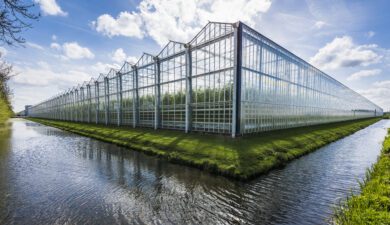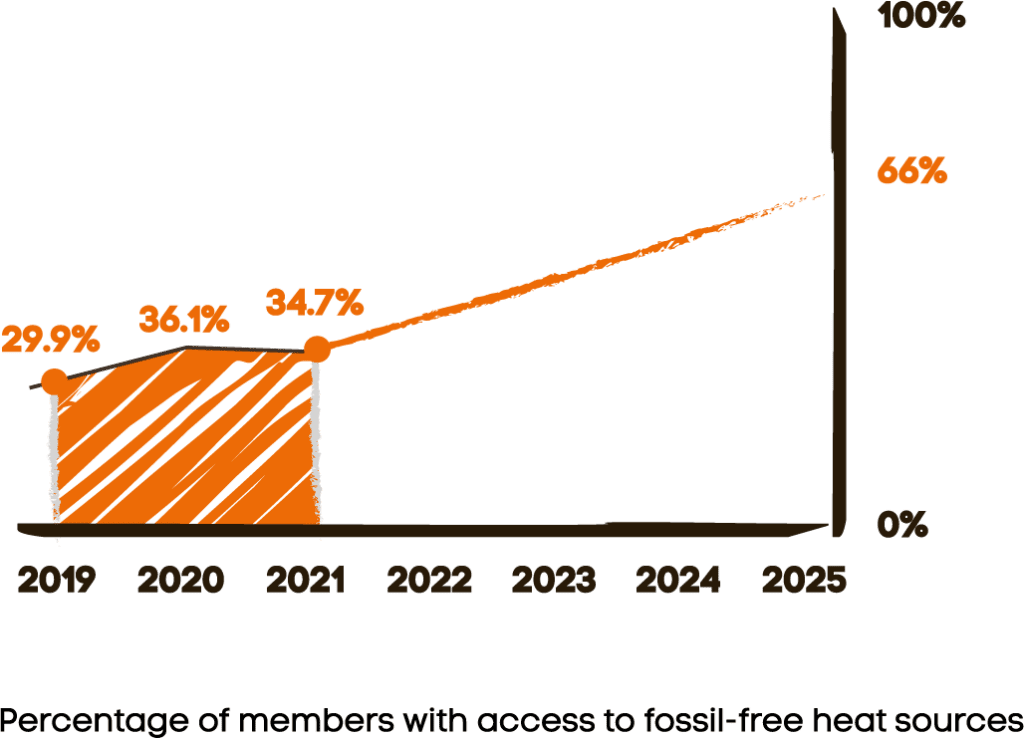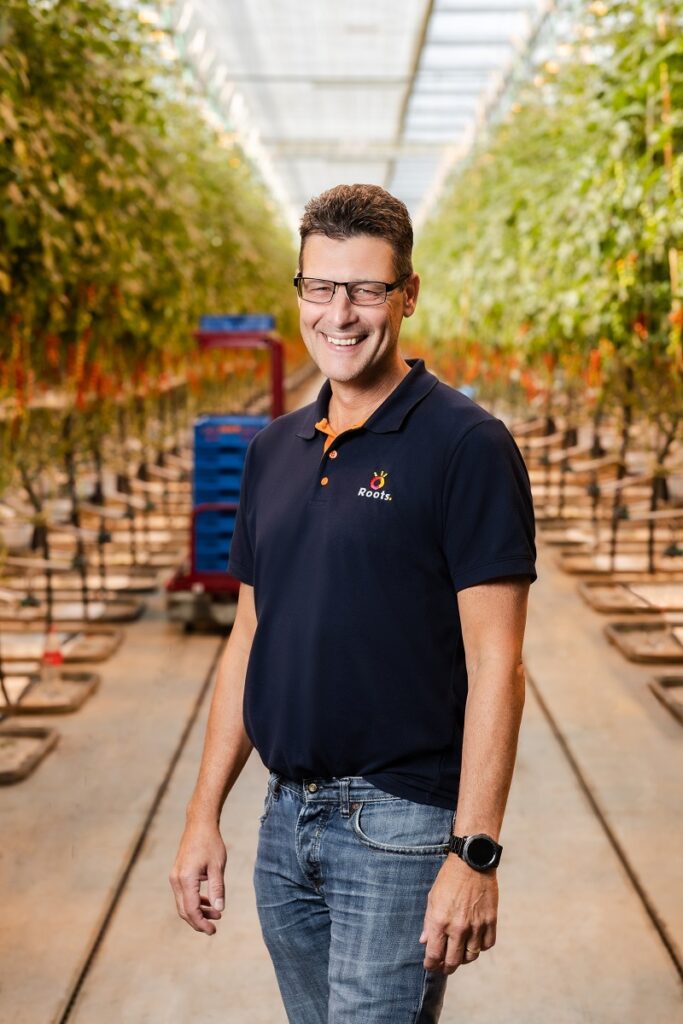Where we stand today
Greenhouses need heating. Preferably not using natural gas, or at least using as little fossil fuel as possible.
Our growers are working hard to save energy and decarbonise the energy supply needed to heat greenhouses, turning to technologies such as Combined Heat and Power (CHP) through efficient energy plants on growers’ premises that produce heat, power and CO2. Both the heat and CO2 are used in greenhouses for the cultivation process. Growers are also working on ways to harness residual heat from industry for greenhouse cultivation. Another increasingly popular option is geothermal heating.
Carbon emissions from greenhouse horticulture in the Netherlands were already down 23% in 2021, compared to 2016.* At present, 35% of our growers use sustainable heating.

*2022 figures not yet available.
goals for 2025


By 2025, 66%
of our members
will have acces to
fossil-free heat.
How we will make it happen
To achieve our goals, many sustainable initiatives are already in progress within our cooperative. For example, solar panels are already installed on most of our growers’ barn roofs. There are even 4340 on the roof of the Growers United building. There are many more examples of sustainable energy among our members. Here are a few examples.
In 2022 a geothermal heating project in Maasdijk was carried out that will enable over 400 hectares of greenhouse space to switch to sustianable heating using the Earth’s interior heat.
Eleven members with around 84 hectares are members of the Maasdijk heat cooperative.
Geothermal energy is a sustainable, clean source of energy. It helps our growers save on energy and reduce CO2 emissions..
Tomato grower Marcel van der Knaap, for example, supplies 6.5 million kilos of tomatoes per year. His nursery in Honselersdijk is a member of the Trias Westland project. that uses geothermal heat to heat greenhouses. A heating network with multiple sources is being constructed in the region to increase the security of supply. Roots will fill 30% of the heat requirement of the Honselersdijk location with geothermal energy.
Using geothermal heat in greenhouses is a sound and sustainable method of heating.
Van der Knaap expects this form of greening will be essential to continue supplying our products.


